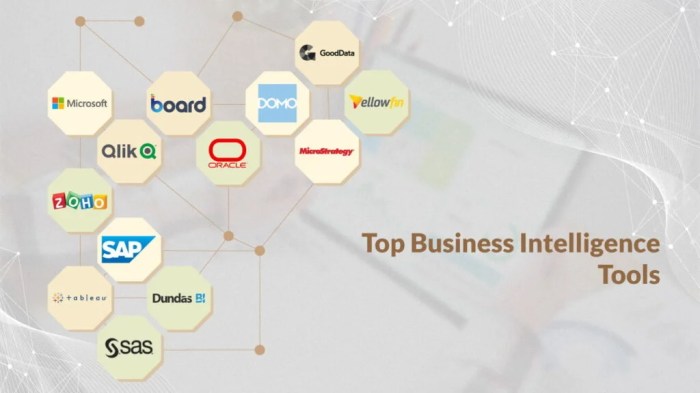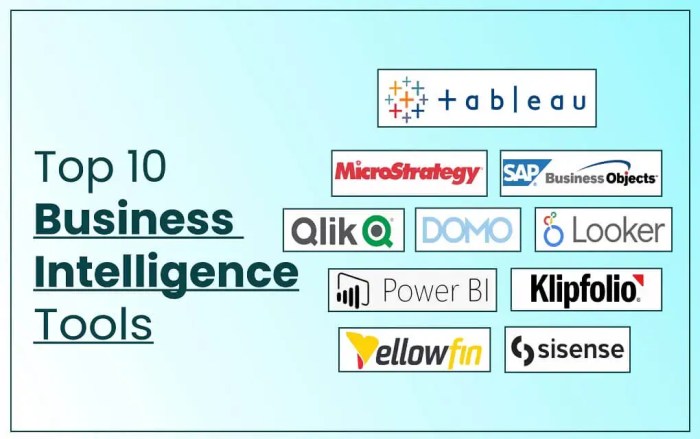Best BI tools for 2025 are set to revolutionize the way businesses harness data, transforming insights into impactful decisions. As organizations increasingly depend on data-driven strategies, the significance of Business Intelligence tools becomes paramount in navigating this dynamic landscape. With advancements in technology and evolving user needs, the BI tools of 2025 promise enhanced functionalities that not only facilitate deeper analysis but also foster collaboration and informed decision-making.
In the run-up to 2025, understanding the key features of BI tools is essential for organizations seeking to stay competitive. User-friendly interfaces, customizable dashboards, and seamless data integration capabilities will be critical criteria for selection. As we explore the top BI tools projected to lead the market, we will uncover the unique selling points, pricing models, and the transformative trends shaping the future of Business Intelligence.
Overview of BI Tools

Business Intelligence (BI) tools have become indispensable in modern organizations, serving as the backbone for informed decision-making and strategic planning. These tools enable companies to analyze data, visualize insights, and derive actionable conclusions that drive performance and growth. As we approach 2025, the landscape of BI tools continues to evolve rapidly, influenced by advancements in technology and changing business requirements.
The core functionalities commonly offered by BI tools include data integration, reporting, analytics, and visualization capabilities. With these features, organizations can transform raw data into meaningful insights, enhancing their competitive edge in the marketplace.
Key Features to Look For in BI Tools
When selecting BI tools, businesses should prioritize several essential features to ensure they meet their analytical needs effectively. A user-friendly interface is crucial, as it allows users of all technical backgrounds to navigate and utilize the tool with ease. Customizable dashboards enable organizations to tailor their data presentation, highlighting the most relevant metrics for their specific goals.
To evaluate data integration capabilities, organizations should consider how well the BI tool connects with existing systems, such as CRM or ERP solutions. A seamless integration reduces data silos and improves overall data reliability.
Top BI Tools for 2025
As the BI landscape evolves, several tools are projected to lead the market in 2025. Below is a comparison of the top BI tools, highlighting their unique selling points and pricing models.
| BI Tool | Unique Selling Points | Pricing Model |
|---|---|---|
| Tableau | Robust visualization capabilities, strong community support | Subscription-based, starting from $70/user/month |
| Power BI | Integration with Microsoft products, affordable pricing | Free tier and premium options starting from $20/user/month |
| Qlik Sense | Associative data model, self-service analytics | Subscription-based, pricing on request |
| Looker | Data modeling capabilities, strong collaboration features | Custom pricing based on usage |
Each of these tools offers distinct features that cater to various organizational needs, ensuring that businesses can find the right fit for their analytics strategy.
Trends Shaping BI Tools in 2025, Best BI tools for 2025

Emerging technologies, particularly artificial intelligence (AI) and machine learning, are significantly impacting the development of BI tools. These technologies enhance predictive analytics, enabling organizations to foresee trends and make proactive decisions.
The shift towards cloud-based BI solutions is another critical trend, offering scalability, flexibility, and cost-effectiveness. Organizations benefit from reduced IT overhead and increased accessibility to data analytics tools.
Real-time data analytics is transforming business decision-making processes, allowing organizations to act swiftly based on the most current information available. This capability is essential in today’s fast-paced business environment, where timely decisions can lead to substantial competitive advantages.
Implementation Strategies for BI Tools
Successful implementation of BI tools requires a structured approach. Organizations should begin by assessing their data infrastructure and identifying key performance indicators (KPIs) to ensure alignment with business goals.
Training staff on new BI tools is vital for maximizing their potential. Best practices include hands-on workshops and ongoing support to facilitate user adaptation.
Continuous feedback and iteration during the implementation phase play a crucial role in refining the BI strategy. Regular check-ins with users can help identify challenges and areas for improvement, ensuring that the BI tools deliver the intended value.
Case Studies of Successful BI Tool Adoption
Many organizations have successfully implemented BI tools, leading to substantial improvements in their operations. For instance, a leading retail company adopted Tableau to enhance its sales reporting process. Initially facing challenges with data integration, the company overcame these hurdles by investing in proper training and support, leading to a 30% improvement in reporting efficiency.
Another example is a healthcare provider that used Power BI to streamline patient data analytics. By integrating various data sources, they were able to reduce patient wait times by 20%, showcasing the tangible benefits of adopting BI tools.
Future Prospects of BI Tools

Looking beyond 2025, the role of BI tools is expected to evolve further as technology advances. Organizations will likely face challenges related to data privacy and the need for advanced analytical skills among staff. However, opportunities will also arise, particularly in the form of new technologies that enhance data visualization and predictive analytics.
Agility and adaptability will be crucial for BI tool development, as businesses will require solutions that can quickly respond to changing market dynamics and user needs. The continuous evolution of these tools will be essential for maintaining a competitive edge in the future business landscape.
Conclusion: Best BI Tools For 2025
In conclusion, the landscape of BI tools in 2025 is poised for remarkable growth, driven by innovations in AI, cloud computing, and real-time analytics. Companies that adopt these tools will not only overcome challenges but also unlock unprecedented opportunities for growth and efficiency. As we look ahead, the importance of agility and adaptability in BI tool development will be crucial for organizations aiming to thrive in an ever-evolving business environment.